The Complete Guide to Building AI Agents
Master the art of creating autonomous AI systems that can think, reason, and act independently. From theoretical foundations to production deployment.
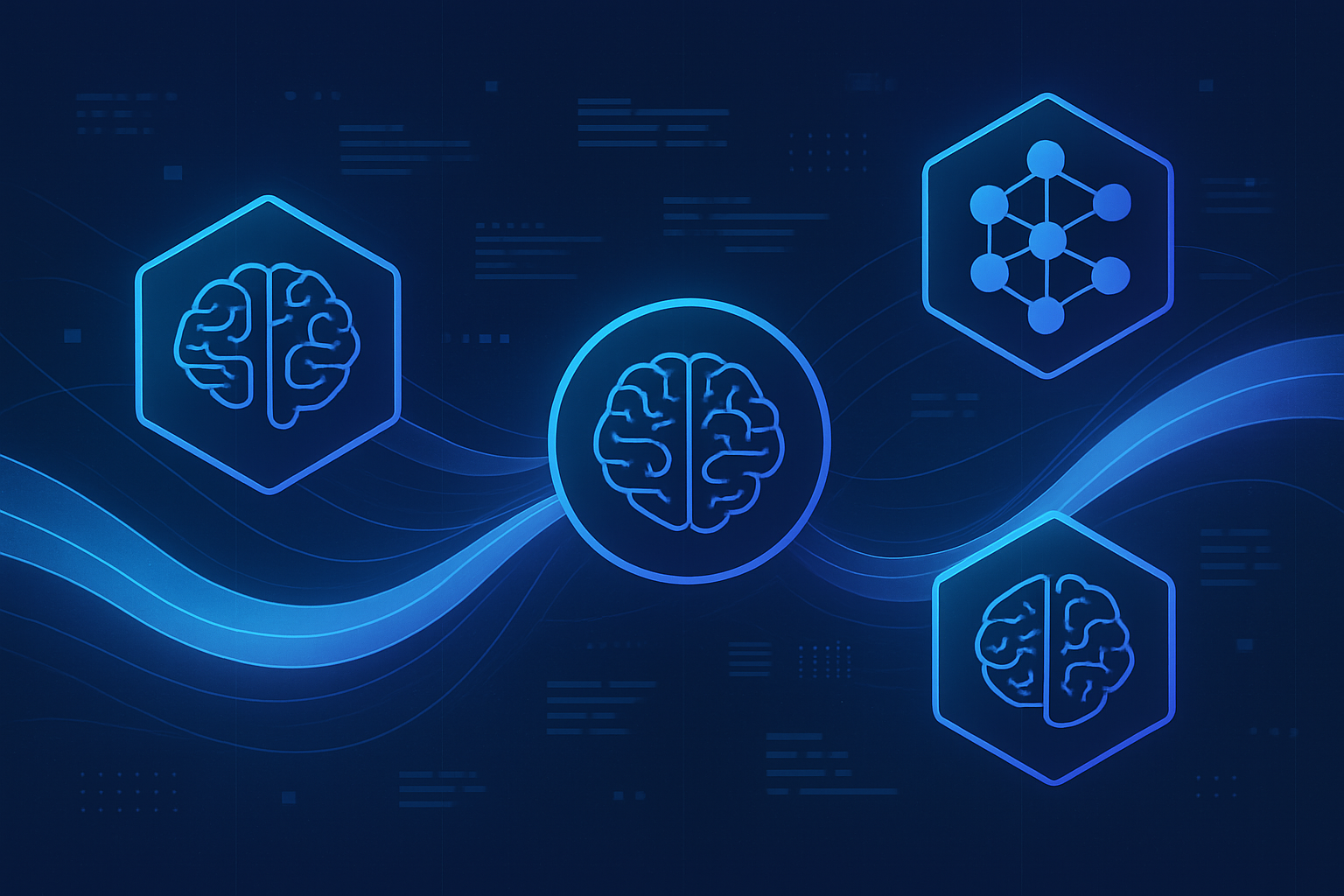
Autonomous Intelligence
Learn how AI agents make decisions and perform tasks without constant human intervention
Production Ready
Build scalable, reliable AI agents that can handle real-world enterprise workloads
Practical Examples
Follow step-by-step implementations using popular frameworks like CrewAI and LangGraph
What Makes Agentic AI Different
The landscape of artificial intelligence has undergone a profound transformation in recent years, evolving from simple rule-based systems to sophisticated autonomous agents capable of independent decision-making and complex task execution. This evolution represents more than just technological advancement; it signifies a fundamental shift in how we conceptualize and deploy AI systems in real-world applications.
Traditional AI systems, while powerful, have operated within clearly defined boundaries and required constant human oversight. They excel at specific tasks—translating languages, recognizing images, or generating text—but lack the autonomy to orchestrate complex workflows or adapt their behavior based on changing circumstances. Agentic AI, by contrast, represents a new paradigm where AI systems can operate with a high degree of independence, making decisions, executing tasks, and learning from their experiences without continuous human intervention.
The distinction lies in what experts call "proactiveness"—the ability of AI systems to understand user goals and context, then autonomously determine the best course of action to achieve those objectives. Unlike generative AI models that respond to prompts with content creation, agentic AI focuses on decision-making and action execution.
What You'll Learn
Theoretical Foundations
Understand how AI agents differ from traditional AI and the core principles that enable autonomous operation
Architecture & Design
Master the architectural patterns and design principles for building reliable, scalable agent systems
Framework Mastery
Compare and implement solutions using CrewAI, LangGraph, and other leading agent frameworks
Hands-on Implementation
Build real-world agents with step-by-step tutorials and production-ready code examples
Enterprise Deployment
Learn security, scalability, and monitoring best practices for production environments
Future Trends
Stay ahead with insights into emerging technologies and the future of autonomous AI systems
Understanding Agentic AI
AI agents represent a fundamental evolution in artificial intelligence, moving beyond simple input-output models to systems capable of autonomous reasoning, planning, and action execution. Understanding the core principles that enable this autonomy is essential for anyone looking to build effective agent systems.
Core Characteristics of Autonomous Agents
Autonomous AI agents possess four fundamental characteristics that distinguish them from traditional AI systems: autonomy (operating without constant human oversight), reactivity (responding to environmental changes), proactiveness (taking initiative to achieve goals), and social ability (interacting with other agents and humans).
The Four-Step Agent Process
Every AI agent operates through a continuous cycle of four key processes: Perceive (gathering information from the environment), Reason (analyzing information and planning actions), Act (executing decisions through available tools), and Learn (updating knowledge based on outcomes).
Agent Types and Capabilities
The Architecture of AI Agents
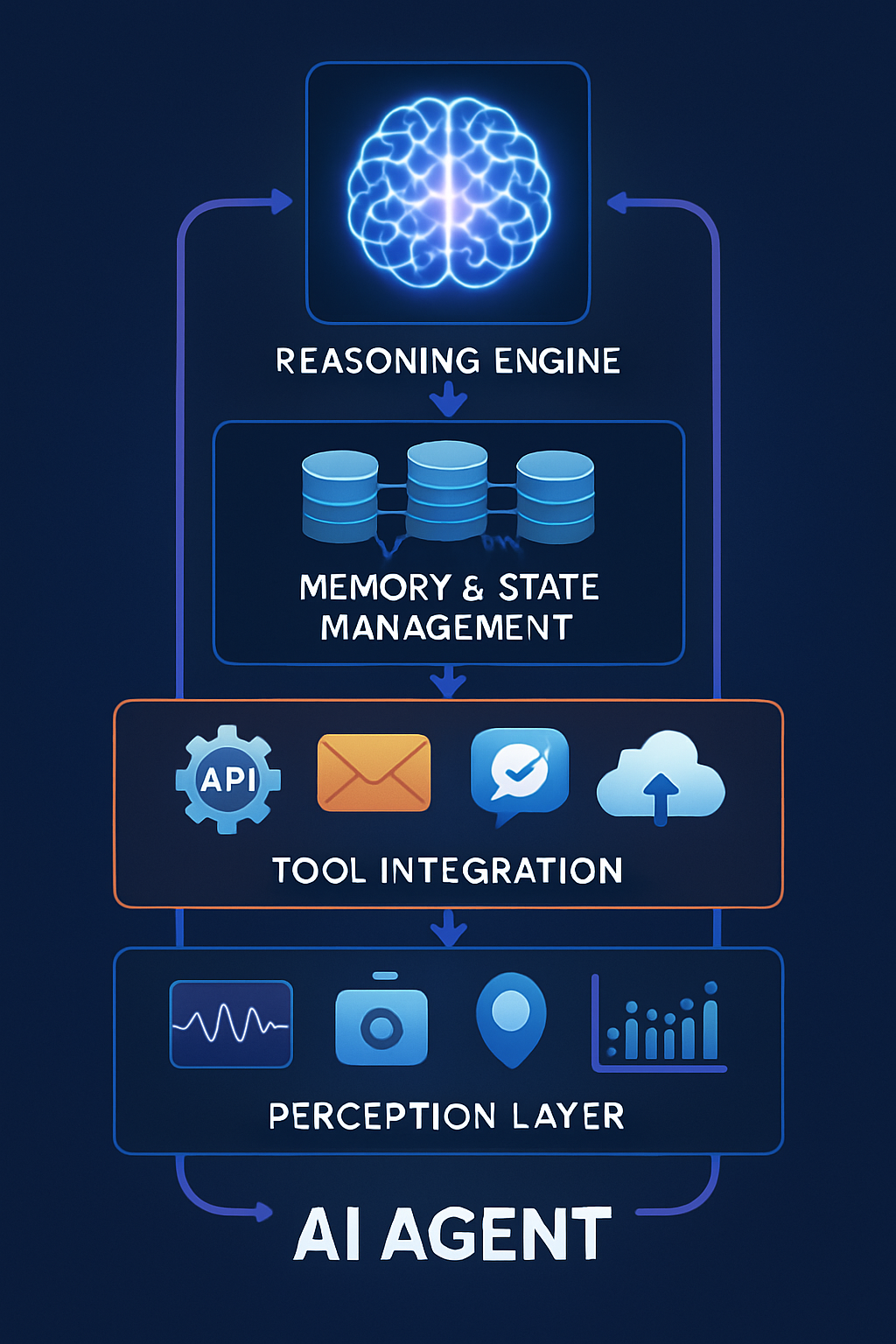
The architecture of AI agents consists of several interconnected components that work together to enable autonomous operation. Understanding these components and their relationships is crucial for designing effective agent systems.
Core Components
Reasoning Engine
The core decision-making component, typically powered by large language models, that processes information and determines appropriate actions.
Memory & State Management
Systems for storing and retrieving information, maintaining context across interactions, and managing agent state.
Tool Integration
Interfaces that allow agents to interact with external systems, APIs, databases, and other services.
Feedback Loops
Mechanisms for learning from outcomes and continuously improving agent performance over time.
Popular AI Agent Frameworks
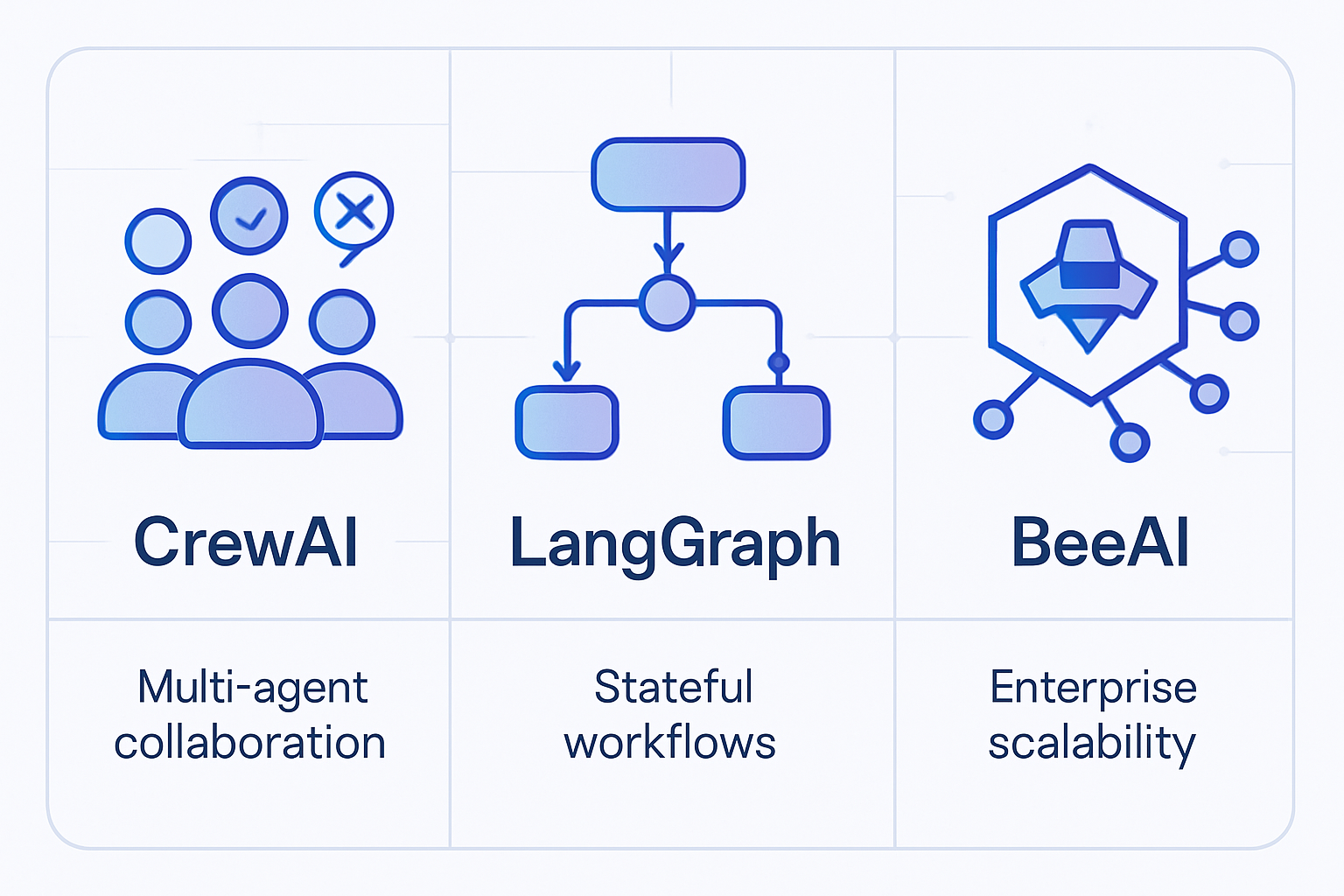
Choosing the right framework is crucial for successful AI agent development. Each framework offers unique strengths and is optimized for different use cases and deployment scenarios.
CrewAI
Multi-Agent CollaborationSpecialized in role-based collaborative intelligence where multiple agents work together as a coordinated team.
- Role-based agent design
- Built-in collaboration patterns
- Easy team orchestration
- Great for content creation
LangGraph
Stateful WorkflowsFocuses on building stateful, multi-actor applications with complex workflow management and state persistence.
- Graph-based workflow design
- Advanced state management
- Flexible routing logic
- Enterprise-grade reliability
BeeAI
Enterprise ScalabilityDesigned for enterprise-grade scalable workflows with robust monitoring and governance capabilities.
- Enterprise security features
- Horizontal scalability
- Advanced monitoring
- Governance and compliance
Step-by-Step Implementation Guide
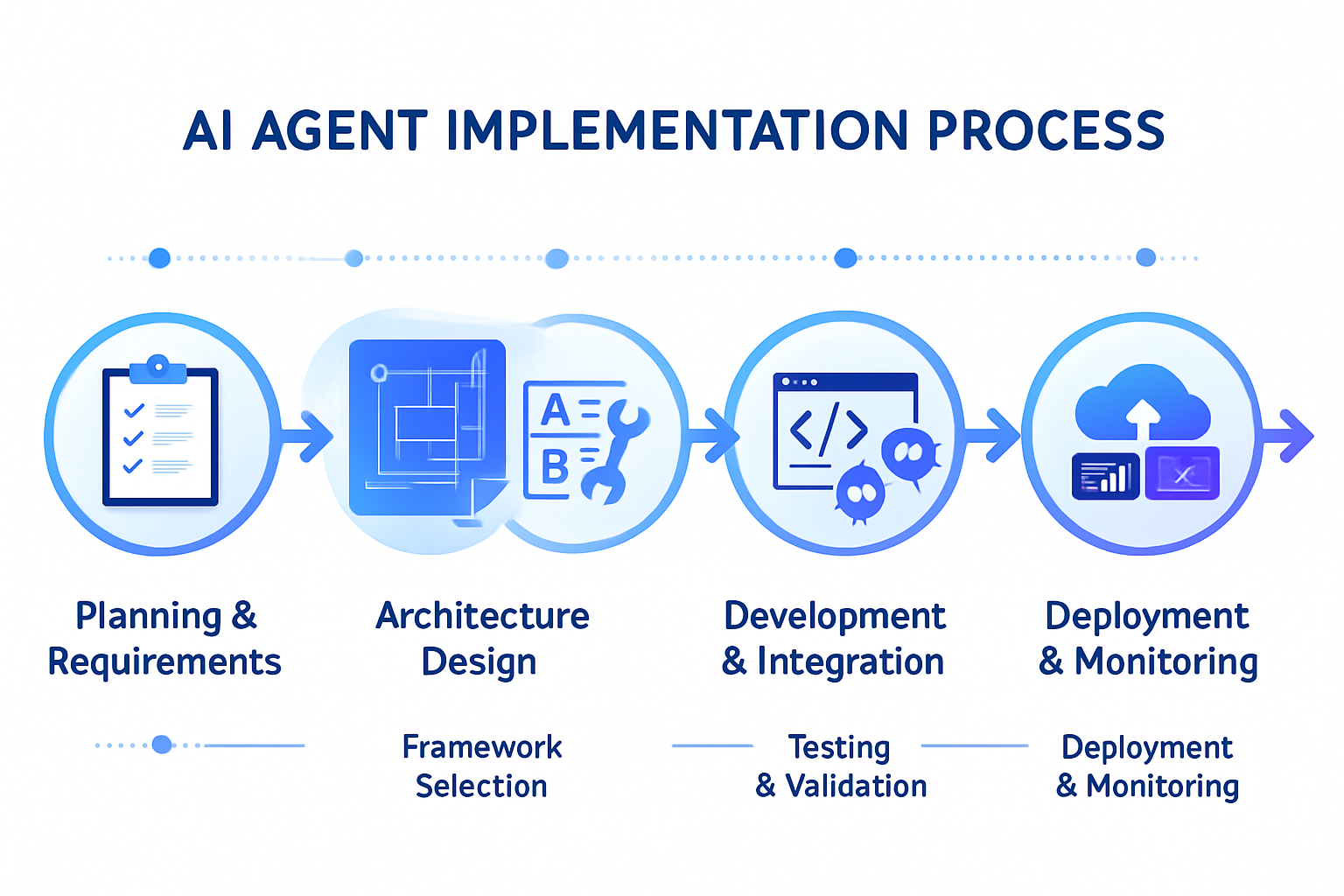
Building effective AI agents requires a systematic approach that covers planning, architecture design, implementation, and deployment. Our 6-phase methodology ensures you build robust, scalable agent systems.
Planning & Requirements
Define agent purpose, scope, and success criteria. Identify required capabilities and constraints.
Architecture Design
Design system architecture, component interactions, and data flow patterns.
Framework Selection
Choose appropriate frameworks and tools based on requirements and team expertise.
Development & Integration
Implement core functionality, integrate tools and APIs, and build agent workflows.
Testing & Validation
Comprehensive testing including unit tests, integration tests, and performance validation.
Deployment & Monitoring
Deploy to production environment with monitoring, logging, and continuous improvement.
Implementation Examples
Learn from practical examples that demonstrate how to build AI agents using different frameworks. Each example includes complete code, explanations, and best practices.
CrewAI Example
Multi-agent customer service system with role-based collaboration and task delegation.
LangGraph Example
Stateful research assistant with complex workflow management and persistent memory.
Custom Agent
Built-from-scratch implementation showing core agent principles and architecture patterns.
Real-World Use Cases
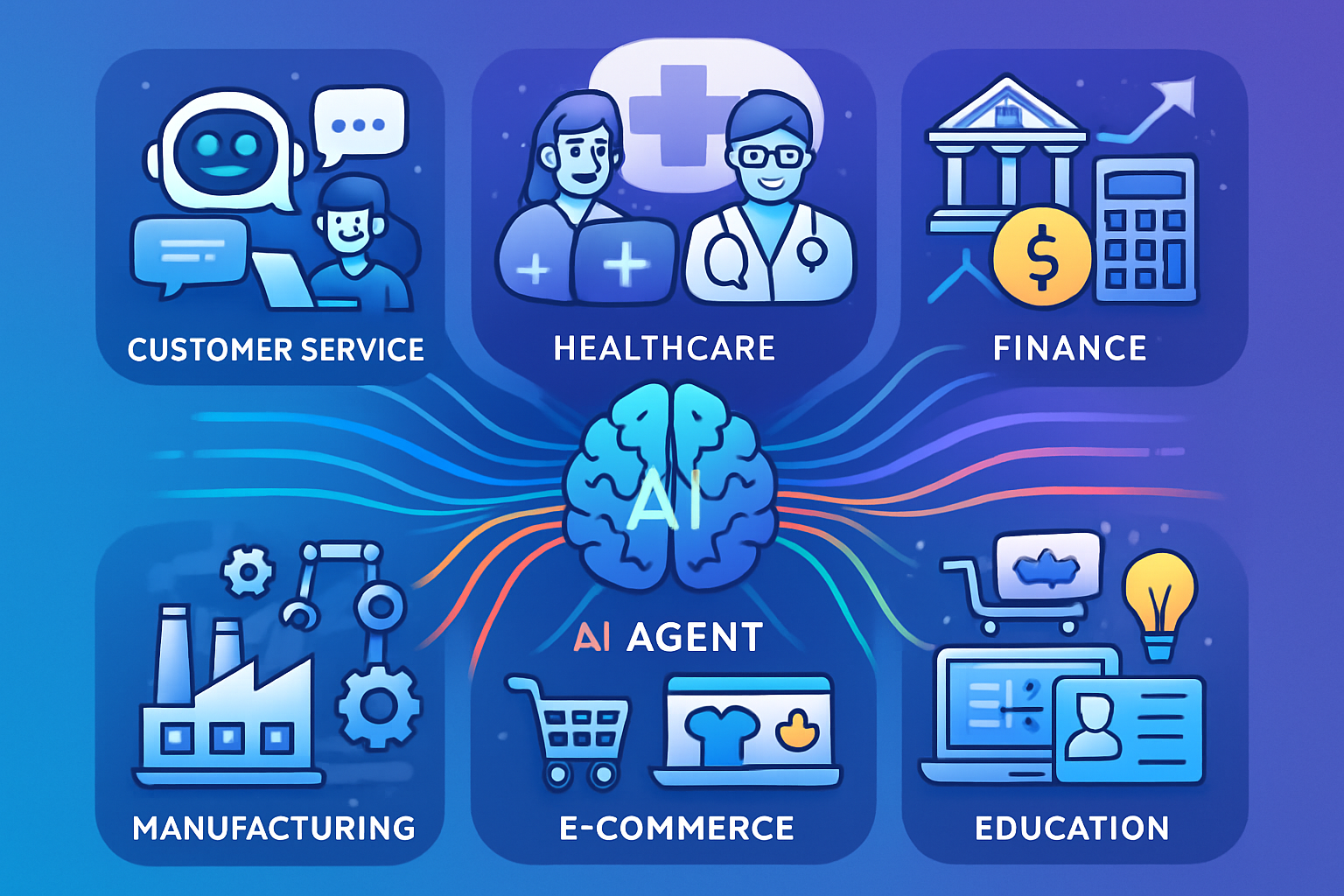
AI agents are transforming industries by automating complex workflows and providing intelligent assistance across diverse domains. Explore how different sectors are leveraging agent technology.
Customer Service
Intelligent support agents that handle inquiries, resolve issues, and escalate complex cases to human agents.
- 24/7 support automation
- Multi-language assistance
- Issue resolution tracking
Healthcare
Medical AI agents assist with diagnosis, treatment planning, and patient monitoring while maintaining compliance.
- Diagnostic assistance
- Treatment recommendations
- Patient monitoring
Finance
Financial agents automate trading, risk assessment, fraud detection, and customer advisory services.
- Automated trading
- Risk analysis
- Fraud detection
Manufacturing
Industrial agents optimize production processes, predict maintenance needs, and manage supply chains.
- Process optimization
- Predictive maintenance
- Quality control
Advanced Topics
This section will contain detailed content about advanced AI agent topics including multi-agent orchestration, security considerations, and enterprise deployment strategies.
Best Practices
This section will contain comprehensive best practices for AI agent development, including design patterns, error handling, and performance optimization techniques.
Future Trends
This section will explore emerging trends in AI agent technology, including the path to AGI and preparing for the agentic AI revolution.
Conclusion
This section will provide a comprehensive summary of key learnings and next steps for implementing AI agents in your organization.